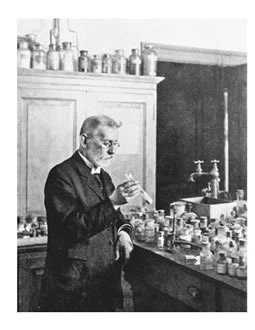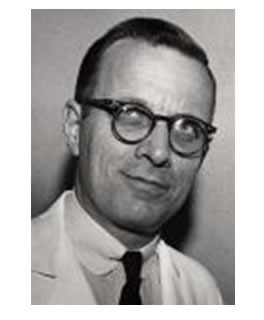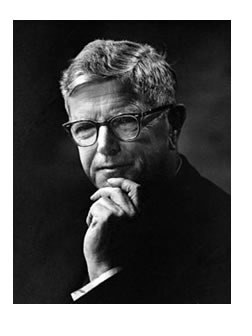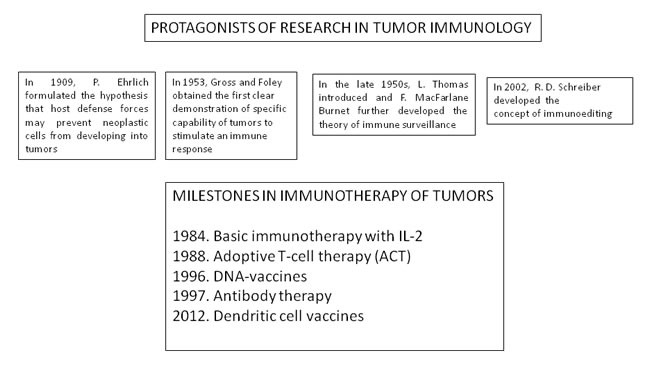Abstract
The immune system plays a major role in the surveillance against tumors. To avoid attack from the immune system, tumor cells develop different strategies to escape immune surveillance. Evidence of immune surveillance comes from both animal models and clinical observations. Mice with a wide variety of immunodeficiencies have a high rate of tumor incidence and are more susceptible to transplanted or chemical carcinogen-induced tumors. Immunosuppressed patients have a high incidence of tumors. However, many patients develop cancer even in the presence of an apparently normal immune system. This indicates that tumor cells are able to escape immune surveillance. The aim of this review article is to summarize the literature concerning the development of the theory of immune surveillance against tumors; to discuss the evidence for and against this theory, and to discuss the concept of immunoediting. Finally, the current approaches in anti-tumor immunotherapy will be analyzed.
Keywords: Antigen, immune surveillance, history of medicine, T cell, tumor
INTRODUCTION
In 1909, Paul Ehrlich (Figure 1) formulated the hypothesis that host defense may prevent neoplastic cells from developing into tumors [1]. He stated that: “in the enormously complicated course of fetal and post-fetal development, aberrant cells become unusually common. Fortunately, in the majority of people, they remain completely latent thanks to the organism's positive mechanisms.” [1]. This hypothesis was not proven experimentally at the time due to the inadequacy of experimental tools and knowledge.
Figure 1. A portrait of Paul Ehrlich.

Later, some biologists suggest the existence of an “immunological surveillance mechanism” against tumor cells. Lewis Thomas (Figure 2) suggested that the immune system recognize newly arising tumors through the expression of tumor specific neo-antigens on tumor cells and eliminate them, similarly to homograft rejection, maintaining tissue homeostasis in complex multicellular organism [2]. The first clear demonstration of specific capability to stimulate an immune response was made by Gross in 1953 after intradermal immunization of C3H mice, obtained by continuous brother to sister mating for more 20 years, against a sarcoma [3], followed by Foley in 1953 in methylcholantrene-induced tumors [4].
Figure 2. A portrait of Lewis Thomas.

Sir Frank Mac Farlane Burnet (Figure 3) hypothesize that tumor cell neo-antigens induce an immunological reaction against cancer and subsequently formulated the immune surveillance theory [5, 6]. He wrote that: “It is by no means inconceivable that small accumulation of tumor cells may develop and because of their possession of new antigenic potentialities provoke an effective immunological reaction with regression of the tumor and no clinical hint of its existence.” [6].
Figure 3. A portrait of Frank MacFarlane Burnet.

.
EVIDENCES CONFIRMING THE THEORY OF IMMUNE SURVEILLANCE
In transplantation models, tumors are rejected in syngeneic hosts, while transplantation of normal tissues are accepted, confirming the existence of tumor-specific antigens [6].
Professional antigen presenting cells process and present tumor associated antigens (via cross presentation of debris, perhaps due to spontaneous tumor cell lysis, or perhaps due to natural killer (NK) cell destruction, or other processes such as “nibbling”) to immune cells, and generate memory and effector cells which survey the body, seeking out tumor cells. In different types of human tumors, including melanoma, cancer of breast, bladder, colon, prostate, ovary, rectum, and glioblastoma [7–13], a longer survival has been observed in patients with an higher number of lymphocytes and NK cells . These latter do not require prior sensitization for efficient tumor cell lysis and following activation with interleukin-2 (IL-2), NK cells can kill tumor cells [15].Regulatory T cells (Tregs) exert both detrimental and beneficial effects to the host [16, 17]. Tumor antigens can be recognized by T cells, in cooperation with major histocompatibility complex (MHC) allowing T cells to interact with the antigen presenting cells [18].
EVIDENCES AGAINST THE THEORY OF IMMUNE SURVEILLANCE
Athymic nude mice, traditionally considered to lack T cells, did not develop significantly more spontaneous or methylcholantrene-induced tumors than control mice [19, 20]. In this experimental condition, the immune response mediated by T and NK cells was similar in immunocompetent and nude mice. Interferon gamma (IFNγ) and perforin, are both involved in prevent tumor formation in mice [21, 22]. In fact, neutralization of IFNγ resulted in rapid growth of tumors [23], and mice lacking IFNγ were more sensitive to methylcholantherene-induced carcinogenesis [21]. However, treatment with IFNγ had no benefit for patients with different type of tumors [24–26]. Perforin inhibited B cell lymphoma development [27–29]. Moreover, mutations in the gene encoding perforin, have been demonstrated in lymphoma patients [30].
About 5% of individuals with primary or secondary immunodeficiences and individuals subjected to therapy to prevent transplant rejection present a heightened incidence of cancer [31]. Cancers most commonly found in immunodeficient individuals are virus-associated [32], including Epstein-Barr virus-related tumors [33, 34]. Failure of human herpes virus (HHV) immune response is one of the factors involved in the pathogenesis of Kaposi sarcoma [35]. Several other cancers, have increased incidences in persons with human immunodeficiency virus (HIV)/AIDS, including hepatocellular carcinoma, which is frequently associated with infection with the hepatitis B or C virus [36]. Merkel cell carcinoma, a rare skin cancer that occurs more frequently after organ transplantation or B-cell malignancy, conditions of suppressed or disordered immunity, has an increased incidence in HIV-infected individuals [37].
Associations between different bacteria, including Helicobacter pylori and clamyidia, and higher incidence of various tumors have been described [38, 39]. Bacteria are capable of homing to tumors when systemically administered, resulting in high levels of replication locally [40, 41]. However, the frequency of non-virally induced tumors, is not increased among transplant recipients [42].
Immune competence decreases with age, the so-called “immunosenescence”, implying that decreased immunosurveillance against cancer contribute to increased disease in the elderly [43]. Cytomegalovirus (CMV) and Epstein Barr Virus (EBV) infection are determinants of immunosenescence [44].
Immunosuppression may be not associated to an increase of tumors [45, 46]. In fact, thymectomy at birth reduced the incidence of mammary adenocarcinoma [47], and immunologic reconstitution restored the susceptibility to tumor [46]. The incidence of mammary carcinomas decreases in immunosuppressed individuals [48]. Finally, leprosy and sarcoidosis which are characterized by immunosuppression, are not associated to an increased incidence of tumors [49].
IMMUNOEDITING, A NEW APPROACH
As Sirvastava [50] said: “The immune surveillance hypothesis is often regarded as the intellectual underpinning of cancer immunology. Although the hypothesis itself has contributed little to our attempts to treat cancer through immunological means, it has profound implications for understanding the functions of the immune system.”
Dunn and Schreiber (Figure 4) developed the concept of “cancer immunoediting”, composed of three phases [51]. In the first one, the elimination phase, tumor cells are killed by NK, CD4+ and CD8+ cells [52]. The second phase corresponds to a state of equilibrium between immune and tumor cells. When the immune system is unable to destroy the tumor, the third phase, corresponding to the escape phase, develops which concludes with the appearance of clinically detectable tumors.
Figure 4. A portrait of Robert D. Schreiber.

Multiple myeloma progresses from the monoclonal gammopathy of undetermined significance (MGUS) to asymptomatic and, respectively, symptomatic myeloma [53]. In this context, it is possible demonstrate that T cells from patients with MGUS develop an immune reaction to premalignant cells, which instead is absent in patients with multiple myeloma and the transition to multiple myeloma correspond to tumor escape phase [54].
The escape phase is characterized by the selection of tumor variants which will progress later on [55–57]; by a down-regulation or loss of the expression of tumor antigens; by an upregulation of resistance against tumor cells and/or an increased expression of pro-survival genes, and finally by the development of an immunouppressive tumor microenvironment [58]. Moreover, the establishment of a condition of central and peripheral immune tolerance, involving the activation of Tregs is crucial for the establishment of an escape mechanism [58, 59].
CURRENT APPROACHES IN ANTI-TUMOR IMMUNOTHERAPY
Some analysts have predicted that within ten years, immunotherapy will constitute 60% of all cancer treatments [60]. A novel group of immunomodulatory antibodies has been introduced in the clinical use, which can break tumor specific immune tolerance and induce regression of tumors. These antibodies block growth signals of tumor cells, or induce apoptosis. Since the introduction of rituximab [61], 13 further tumor-directed antibodies have been approved.
Three of the most significant therapeutic approaches are represented by sipuleucel-T, an immunotherapeutic vaccine for prostate cancer [62]; ipilimumab, a check point inhibitor of CTLA-4 [63], and anti-programmed death receptor-1 (PD-1) and its ligand PDL-1 antibodies (anti-PD-1/PD-L-1) [64–66] for the treatment of metastatic melanoma.
Currently, cancer immunotherapies are classified as active and passive treatments. Active treatments include vaccines designed to induce tumor cell recognition. Passive treatments, on the other hand, imply direct administration of antibodies and T cells, to the patient. In this context, immune checkpoint inhibitors and adoptive T cell therapy are among the most innovative approaches [67]. At the clinical level, it is not yet clarified why certain patients respond to specific types of immunotherapies, while others do not. The development of future treatments depends on finding effective immune-based biomarkers that can help to predict responses to treatment.
CONCLUDING REMARKS
In this article, I have summarized the historical and experimental basis of tumor immune surveillance and cancer immunoediting (Figure 5) and I have discussed its dual roles in host protection and tumor escape. Many progresses have been found in this field starting from the original formulation of the immune surveillance theory, but further studies on cellular and molecular mechanisms to contribute to antitumor immune responses will be needed in the next years.
Figure 5. Time sheet of the protagonists of research in tumor immunology and of the milestones in immunotherapy of tumors.

Acknowledgments
This work was supported by European Union Seventh Framework Programme (FP7/2007-2013) under grant agreement n.278570 to DR.
Footnotes
CONFLICTS OF INTEREST
The authors declare that there are no conflicts of interest.
REFERENCES
- 1.Ehrlich P. Ueber den jetzigen Stand der Karzinomforschung. Ned Tijdschr Geneeskd. 1909;5:273–290. [Google Scholar]
- 2.Thomas L. Discussion of cellular and humoral aspects of hypersensitive states. In: Lawrence HS, editor. New York, Hoeber-Harper: 1959. [Google Scholar]
- 3.Burnet FM, Cancer A biological approach. 1. The process of control. Br Med J. 1957;1:779–782. doi: 10.1136/bmj.1.5022.779. [DOI] [PMC free article] [PubMed] [Google Scholar]
- 4.Gross L. Intradermal immunization of C3H mice against a sarcoma that originated in an animal of the same line. Cancer Res. 1943;3:326–333. [Google Scholar]
- 5.Foley EJ. Antigenic properties of methylcholantherene-induced tumors in mice of the strain of origin. Cancer Res. 1953;13:835–837. [PubMed] [Google Scholar]
- 6.Burnet FM. Oxford: Pergamon Press; 1970. Immunological surveillance. [Google Scholar]
- 7.Clemente CG, Mihm MC, Jr, Bufalino R, Zurrida S, Collini P, Cascinelli N. Prognostic value of tumor infiltrating lymphocytes in the vertical growth phase of primary cutaneous melanoma. Cancer. 1996;77:1303–1310. doi: 10.1002/(SICI)1097-0142(19960401)77:7<1303::AID-CNCR12>3.0.CO;2-5. [DOI] [PubMed] [Google Scholar]
- 8.Rilke F, Colnaghi MI, Cascinelli N, Andreola S, Baldini MT, Bufalino R, Della Porta G, Ménard S, Pierotti MA, Testori A. Prognostic significance of HER-2/neu expression in breast cancer and its relationship to other prognostic factors. Int J Cancer. 1991;49:44–49. doi: 10.1002/ijc.2910490109. [DOI] [PubMed] [Google Scholar]
- 9.Lipponen PK, Eskelinen MJ, Jauhiainen K, Harju E, Terho R. Tumour infiltrating lymphocytes as an independent prognostic factor in transitional cell bladder cancer. Eur J Cancer. 1992;29A:69–75. doi: 10.1016/0959-8049(93)90579-5. [DOI] [PubMed] [Google Scholar]
- 10.Nacopoulou L, Azaris P, Papacharalampous N, Davaris P. Prognostic significance of histologic host response in cancer of the large bowel. Cancer. 1981;47:930–936. doi: 10.1002/1097-0142(19810301)47:5<930::aid-cncr2820470519>3.0.co;2-1. [DOI] [PubMed] [Google Scholar]
- 11.Epstein NA, Fatti LP. Prostatic carcinoma: some morphological features affecting prognosis. Cancer. 1976;37:2455–2465. doi: 10.1002/1097-0142(197605)37:5<2455::aid-cncr2820370539>3.0.co;2-v. [DOI] [PubMed] [Google Scholar]
- 12.Deligdisch L, Jacobs AJ, Cohen CJ. Histologic correlates of virulence in ovarian adenocarcinoma. II. Morphologic correlates of host response. Am J Obstet Gynecol. 1982;144:885–889. doi: 10.1016/0002-9378(82)90178-8. [DOI] [PubMed] [Google Scholar]
- 13.Jass JR. Lymphocytic infiltration and survival in rectal cancer. J Clin Pathol. 1986;39:585–589. doi: 10.1136/jcp.39.6.585. [DOI] [PMC free article] [PubMed] [Google Scholar]
- 14.Palma L, Di Lorenzo N, Guidetti B. Lymphocytic infiltrates in primary glioblastomas and recidivous gliomas. Incidence, fate, and relevance to prognosis in 228 operated cases. J Neurosurg. 1978;49:854–861. doi: 10.3171/jns.1978.49.6.0854. [DOI] [PubMed] [Google Scholar]
- 15.Waldhauer I, Steinle A. NK cells and cancer immunosurveillance. Oncogene. 2008;27:932–943. doi: 10.1038/onc.2008.267. [DOI] [PubMed] [Google Scholar]
- 16.Nishikawa H, Sakaguchi S. Regulatory T cells in tumor immunity. Int J Cancer. 2010;127:759–767. doi: 10.1002/ijc.25429. [DOI] [PubMed] [Google Scholar]
- 17.Facciabene A, Motz GT, Coukos G. T regulatory cells: key players in tumor immune escape and angiogenesis. Cancer Res. 2012;72:2162–2171. doi: 10.1158/0008-5472.CAN-11-3687. [DOI] [PMC free article] [PubMed] [Google Scholar]
- 18.Boon T, van der Bruggen P. Human tumor antigens recognized by T lymphocytes. J Exp Med. 1996;183:725–729. doi: 10.1084/jem.183.3.725. [DOI] [PMC free article] [PubMed] [Google Scholar]
- 19.Stutman O. Tumor development after 3-methylcholanthrene in immunologically deficient athymic-nude mice. Science. 1974;183:534–536. doi: 10.1126/science.183.4124.534. [DOI] [PubMed] [Google Scholar]
- 20.Outzen HC, Custer RP, Eaton GJ, Prehn RT. Spontaneous and induced tumor incidence in germfree “nude” mice. J Reticuloendothel Soc. 1975;17:1–9. [PubMed] [Google Scholar]
- 21.Kaplan DH, Shankaran V, Dighe AS, Stockert E, Aguet M, Old LJ, Schreiber RD. Demonstration of an interferon gamma-dependent tumor surveillance system in immunocompetent mice. Proc Natl Acad Sci USA. 1998;95:7556–7561. doi: 10.1073/pnas.95.13.7556. [DOI] [PMC free article] [PubMed] [Google Scholar]
- 22.Shankaran V, Ikeda H, Bruce AT, White JM, Swanson PE, Old LJ, Schreiber RD. IFN gamma and lymphocytes prevent primary tumour development and shape tumour immunogenicity. Nature. 2001;410:1107–1111. doi: 10.1038/35074122. [DOI] [PubMed] [Google Scholar]
- 23.Dighe A, Richards E, Old L, Schreiber R. Enhanced in vivo growth and resistance to rejection of tumor cells expressing dominant negative IFN-receptors. Immunity. 1994;1:447–456. doi: 10.1016/1074-7613(94)90087-6. [DOI] [PubMed] [Google Scholar]
- 24.Gleave ME, Elhilali M, Fradet Y, Davis I, Venner P, Saad F, Klotz LH, Moore MJ, Paton V. Bajamonde A.Interferon γ -1b compared with placebo in metastatic renal-cell carcinoma. Canad Urolo Oncology Group. N. Engl. J. Med. 1998;338:1265–1271. doi: 10.1056/NEJM199804303381804. [DOI] [PubMed] [Google Scholar]
- 25.Wiesenfeld M, O’Connell MJ, Wieand HS, Gonchoroff NJ, Donohue JH, Fitzgibbons RJ, Jr, Krook JE, Mailliard JA, Gerstner JB, Pazdur R. Controlled clinical trial of interferon-γ as postoperative surgical adjuvant therapy for colon cancer. J Clin Oncol. 1995;13:2324–2329. doi: 10.1200/JCO.1995.13.9.2324. [DOI] [PubMed] [Google Scholar]
- 26.Jett JR, Maksymiuk AW, Su JQ, Mailliard JA, Krook JE, Tschetter LK, Kardinal CG, Twito DI, Levitt R, Gerstner JB. Phase III trial of recombinant interferon γ in complete responders with small-cell lung cancer. J Clin Oncol. 1994;12:2321–2326. doi: 10.1200/JCO.1994.12.11.2321. [DOI] [PubMed] [Google Scholar]
- 27.van den Broek ME, Kägi D, Ossendorp F, Toes R, Vamvakas S, Lutz WK, Zinkernagel RM, Hengarten H. Decreased tumor surveillance in perforin-deficient mice. J Exp Med. 1996;184:1781–1790. doi: 10.1084/jem.184.5.1781. [DOI] [PMC free article] [PubMed] [Google Scholar]
- 28.Bolitho P, Street SEA, Westwood JA, Edelmann W, MacGregor D, Waring P, Murray WK, Godfrey DI, Trapani JA, Johnstone RW, Smyth MJ. Perforin-mediated suppression of B-cell lymphoma. Proc Natl Acad Sci USA. 2009;106:2723–2728. doi: 10.1073/pnas.0809008106. [DOI] [PMC free article] [PubMed] [Google Scholar]
- 29.Street SE, Hayakawa Y, Zhan Y, Lew AM, MacGregor D, Jamieson AM, Diefenbach A, Yagita H, Godfrey DI, Smyth MJ. Innate immune surveillance of spontaneous B cell lymphomas by natural killer cells and gamma delta T cells. J Exp Med. 2004;199:879–884. doi: 10.1084/jem.20031981. [DOI] [PMC free article] [PubMed] [Google Scholar]
- 30.Clementi R, Locatelli F, Dupré L, Garaventa A, Emmi L, Bregni M, Cefalo G, Moretta A, Danesino C, Comis M, Pession A, Ramenghi U, Maccario R, et al. A proportion of patients with lymphoma may harbor mutations of the perforin gene. Blood. 2005;105:4424–4428. doi: 10.1182/blood-2004-04-1477. [DOI] [PubMed] [Google Scholar]
- 31.Melief CJM, Schwartz RS. In: Immunocompetence and malignancy, In Cancer: A Comprehensive treatise. Becker FF, editor. Vol. 1. New York: Plenum Press; 1975. pp. 121–160. [Google Scholar]
- 32.Schulz TF. Cancer and viral infection in immunocompromised individuals. Int J Cancer. 2009;125:1755–1763. doi: 10.1002/ijc.24741. [DOI] [PubMed] [Google Scholar]
- 33.Gaidano G, Dalla-Favera R. Biologic aspects of human immunodeficiency virus-related lymphoma. Curr Opin Oncol. 1992;4:900–906. doi: 10.1097/00001622-199210000-00013. [DOI] [PubMed] [Google Scholar]
- 34.Ru-Chen M. Epstein-Barr virus, the immune system, and associated diseases. Front Microbiol. 2011;2:5. doi: 10.3389/fmicb.2011.00005. [DOI] [PMC free article] [PubMed] [Google Scholar]
- 35.Mesri EA, Cesarman E, Arvanitakis L, Rafii S, Moore MA, Posnett DN, Knowles DM, Asch AS. Human herpes virus-8/Kaposi's sarcoma associated herpes virus is a new transmissible virus that infects B cells. J Exp Med. 1996;183:2385–2390. doi: 10.1084/jem.183.5.2385. [DOI] [PMC free article] [PubMed] [Google Scholar]
- 36.Tholey DM, Ahn J. Impact of hepatitis C virus infection on hepatocellular carcinoma. Gastroent Clin North Am. 2015;44:761–773. doi: 10.1016/j.gtc.2015.07.005. [DOI] [PubMed] [Google Scholar]
- 37.Engels EA, Frisch M, Goedert JJ, Biggar RJ, Miller RW. Merkel cell carcinoma and HIV infection. Lancet. 2002;359:497–498. doi: 10.1016/S0140-6736(02)07668-7. [DOI] [PubMed] [Google Scholar]
- 38.Mc Farlane GA, Munro A. Helicobacter pylori and gastric cancer. Br J Surg. 1997;84:1190–1199. [PubMed] [Google Scholar]
- 39.Silva J, Cerqueira F, Medeiros R. Chlamydia trachomatis infection: implications for HPV status and cervical cancer. Arch Gynecol Obstet. 2014;289:715–723. doi: 10.1007/s00404-013-3122-3. [DOI] [PubMed] [Google Scholar]
- 40.Morrissey D, O’Sullivan GC, Tangney M. Tumour targeting with systemically administered bacteria. Curr Gene Ther. 2010;10:3–14. doi: 10.2174/156652310790945575. [DOI] [PubMed] [Google Scholar]
- 41.Toso JF. Phase I study of the intravenous administration of attenuated Salmonella typhi murium to patients with metastatic melanoma. J Clin Oncol. 2002;20:142–152. doi: 10.1200/JCO.2002.20.1.142. [DOI] [PMC free article] [PubMed] [Google Scholar]
- 42.Chapman JR, Webster AC, Wong G. Cancer in the transplant recipient. Cold Spring Harb Perspect. Med. 2013;3:a015677. doi: 10.1101/cshperspect.a015677. [DOI] [PMC free article] [PubMed] [Google Scholar]
- 43.Pawelec G, Derhov E, Larbi A. Immunosenescence and cancer. Crit Rev Oncol Hematol. 2010;75:165–172. doi: 10.1016/j.critrevonc.2010.06.012. [DOI] [PubMed] [Google Scholar]
- 44.Fulop T, Kotb R, Fortin CF, Pawelec G, de Angelis F, Larbi A. Potential role of immunosenescence in cancer development. Ann N Y Acad Sci. 2010;1197:158–165. doi: 10.1111/j.1749-6632.2009.05370.x. [DOI] [PubMed] [Google Scholar]
- 45.Martinez C. Effect of early thymectomy on development of mammary tumours in mice. Nature. 1964;203:1188. doi: 10.1038/2031188a0. [DOI] [PubMed] [Google Scholar]
- 46.Penn I. Tumors of the immunocompromised patient. Ann Rev Med. 1988;39:63–73. doi: 10.1146/annurev.me.39.020188.000431. [DOI] [PubMed] [Google Scholar]
- 47.Yunis EJ, Martinez C, Smith J, Stutman O, Good RA. Spontaneous mammary adenocarcinoma in mice: influence of thymectomy and reconstitution with thymus grafts or spleen cells. Cancer Res. 1969;29:174–178. [PubMed] [Google Scholar]
- 48.Stewart T, Tsai SC, Grayson H, Henderson R, Opelz G. Incidence of de-novo breast cancer in women chronically immunosuppressed after organ transplantation. Lancet. 1995;346:796–798. doi: 10.1016/s0140-6736(95)91618-0. [DOI] [PubMed] [Google Scholar]
- 49.Stutman O. Immunodepression and malignancy. Adv Cancer Res. 1975;22:261–422. doi: 10.1016/s0065-230x(08)60179-7. [DOI] [PubMed] [Google Scholar]
- 50.Sirvastava PK. Immunity to cancers. In: Male D, Brostoff J, Roth DB, Roitss I, editors. Immunology, Seventh edition. Mosby Elsevier; 2006. p. 422. [Google Scholar]
- 51.Dunn GP, Bruce AT, Ikeda H, Old LJ, Schreiber RD. Cancer immunoediting: from immunosurveillance to tumor escape. Nat Immunol. 2002;3:991–998. doi: 10.1038/ni1102-991. [DOI] [PubMed] [Google Scholar]
- 52.Gasser S, Raulet DH. The DNA damage response arouses the immune system. Cancer Res. 2006;66:3959–3962. doi: 10.1158/0008-5472.CAN-05-4603. [DOI] [PubMed] [Google Scholar]
- 53.Dhodapkar MV. Immune response to premalignancy: insights from patients with monoclonal gammopathy. Ann N Y Acad Sci. 2005;1062:22–28. doi: 10.1196/annals.1358.004. [DOI] [PubMed] [Google Scholar]
- 54.Dhodapkar MV, Krasovsky J, Osman K, Geller MD. Vigorous premalignancy-specific effector T cell response in the bone marrow of patients with monoclonal gammopathy. J Exp Med. 2003;198:1753–1757. doi: 10.1084/jem.20031030. [DOI] [PMC free article] [PubMed] [Google Scholar]
- 55.Corthay A. Does the immune system naturally protect against cancer? Front Immunol. 2014;12:197. doi: 10.3389/fimmu.2014.00197. [DOI] [PMC free article] [PubMed] [Google Scholar]
- 56.Teng MW, Galon J, Fridman WH, Smyth MJ. From mice to humans: developments in cancer immunoediting. J Clin Invest. 2015;125:3338–3346. doi: 10.1172/JCI80004. [DOI] [PMC free article] [PubMed] [Google Scholar]
- 57.Muenst S, Läubli H, Soysal SD, Zippelius A, Tzankov A, Hoeller S. The immune system and cancer evasion strategies: therapeutic concepts. J Intern Med. 2016;279:541–562. doi: 10.1111/joim.12470. [DOI] [PubMed] [Google Scholar]
- 58.Dunn GP, Old LJ, Schreiber RD. The three Es of cancer immunoediting. Ann Rev Immunol. 2004;22:329–360. doi: 10.1146/annurev.immunol.22.012703.104803. [DOI] [PubMed] [Google Scholar]
- 59.Schwann JB, Smyth MJ. Immune surveillance of tumors. J Clin Invest. 2007;117:1137–1146. doi: 10.1172/JCI31405. [DOI] [PMC free article] [PubMed] [Google Scholar]
- 60.Ledford H. Cancer treatment: the killer within. Nature. 2014;505:24–26. doi: 10.1038/508024a. [DOI] [PubMed] [Google Scholar]
- 61.Cheson BD, Leonard JP. Monoclonal antibody therapy for B-cell non Hodgkin's lymphoma. N Engl J Med. 2008;359:613–626. doi: 10.1056/NEJMra0708875. [DOI] [PubMed] [Google Scholar]
- 62.Gulley JL, Mulders P, Albers P, Banchereau J, Bolla M, Pantel K, Powles P. Perspectives on sipuleucel-T: Its role in the prostate cancer treatment paradigm. Oncoimmunology. 2015;10:e1107698. doi: 10.1080/2162402X.2015.1107698. [DOI] [PMC free article] [PubMed] [Google Scholar]
- 63.Hodi FS, O’Day SJ, McDermott DF, Weber RW, Sosman JA, Haanen JB, Gonzalez R, Robert C, Schadendorf D, Hassel JC, Akerley W, van den Eertwegh AJ, Lutzky J, et al. Improved survival with ipilimumab in patients with metastatic melanoma. N Engl J Med. 2010;363:711–723. doi: 10.1056/NEJMoa1003466. [DOI] [PMC free article] [PubMed] [Google Scholar]
- 64.He YF, Zhang GM, Wang XH, Zhang H, Yuan Y, Li D, Feng ZH. Blocking programmed death-1 ligand-PD-1 interactions by local gene therapy results in enhancement of antitumor effect of secondary lymphoid tissue chemokine. J Immunol. 2004;173:4919–4928. doi: 10.4049/jimmunol.173.8.4919. [DOI] [PubMed] [Google Scholar]
- 65.Blank C, Brown I, Peterson AC, Spiotto M, Iwai Y, Honjo T, Gajewski TF. PD-L1/B7H-1 inhibits the effector phase of tumor rejection by T cell receptor (TCR) transgenic CD8+ T cells. Cancer Res. 2004;64:1140–1145. doi: 10.1158/0008-5472.can-03-3259. [DOI] [PubMed] [Google Scholar]
- 66.Philips GK, Atkins M. Therapeutic uses of anti-PD-1 and anti-PD-L1 antibodies. Int Immunol. 2015;27:39–46. doi: 10.1093/intimm/dxu095. [DOI] [PubMed] [Google Scholar]
- 67.Sharma P, Allison JP. The future of immune check point therapy. Science. 2015;348:56–61. doi: 10.1126/science.aaa8172. [DOI] [PubMed] [Google Scholar]


